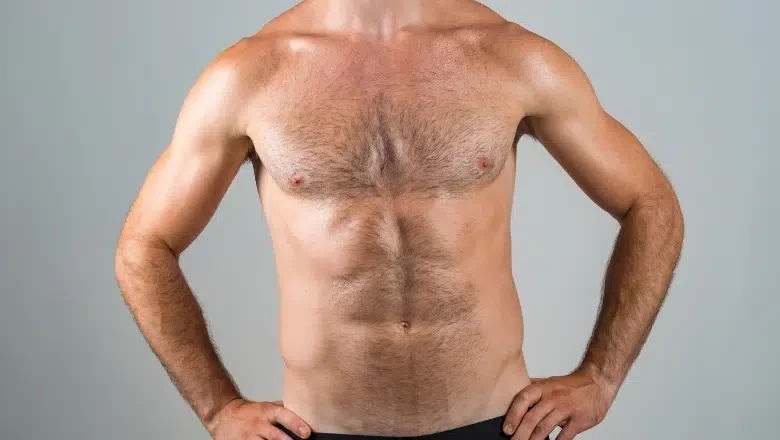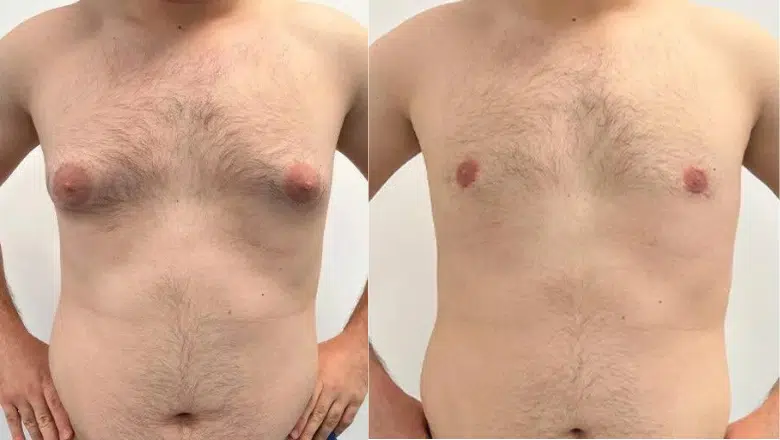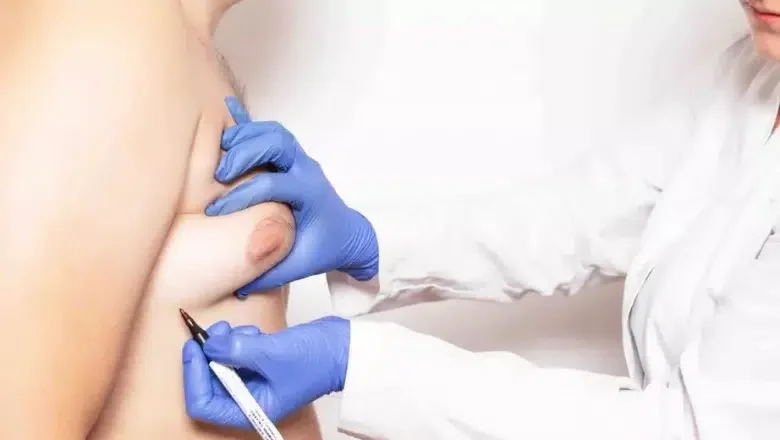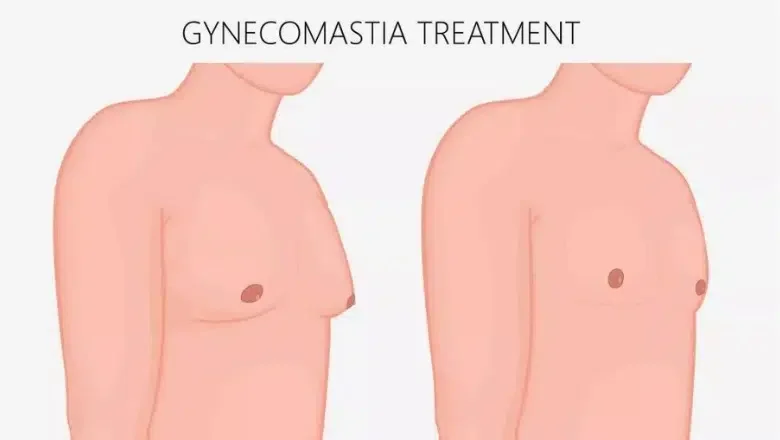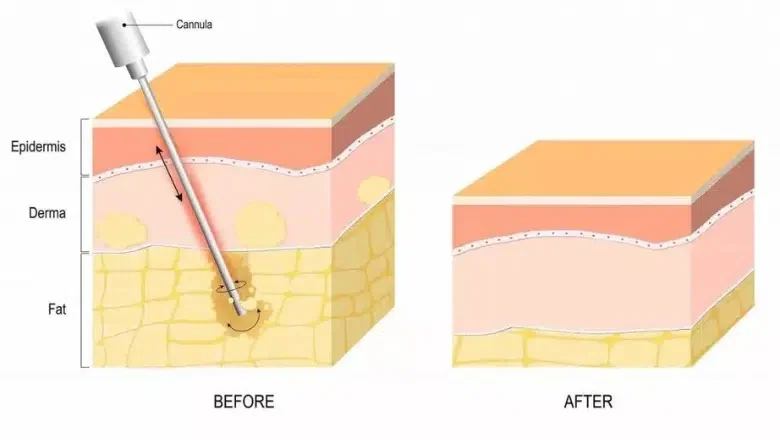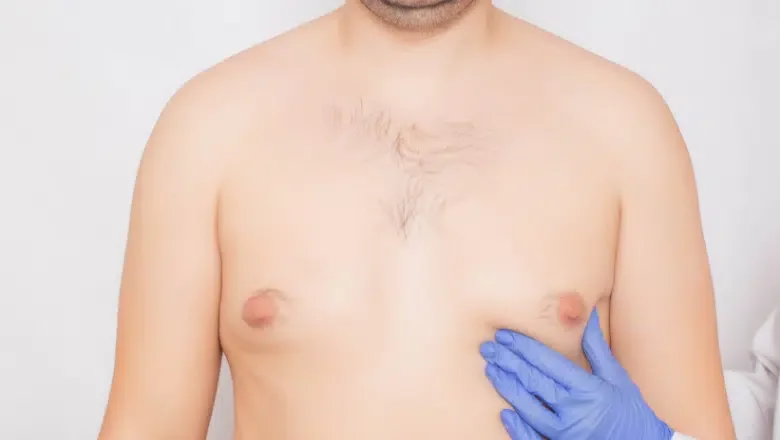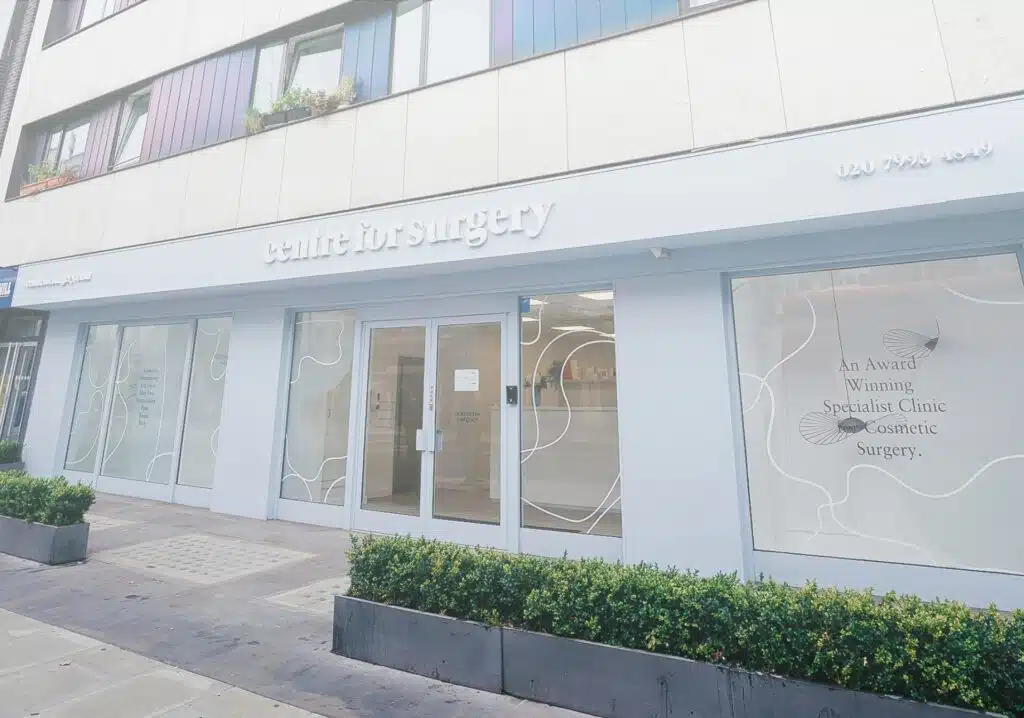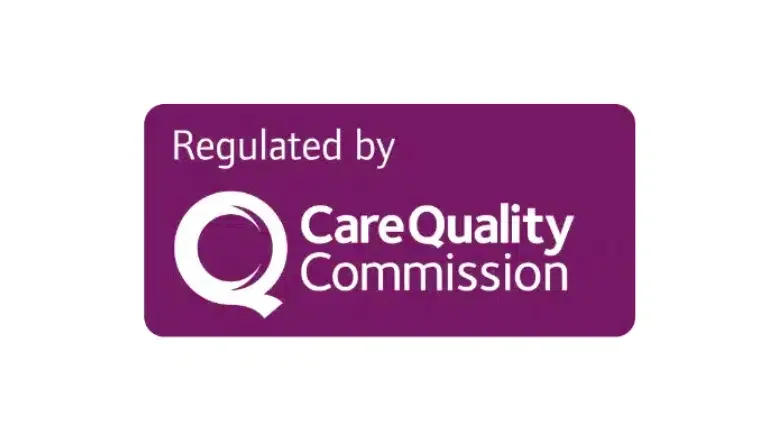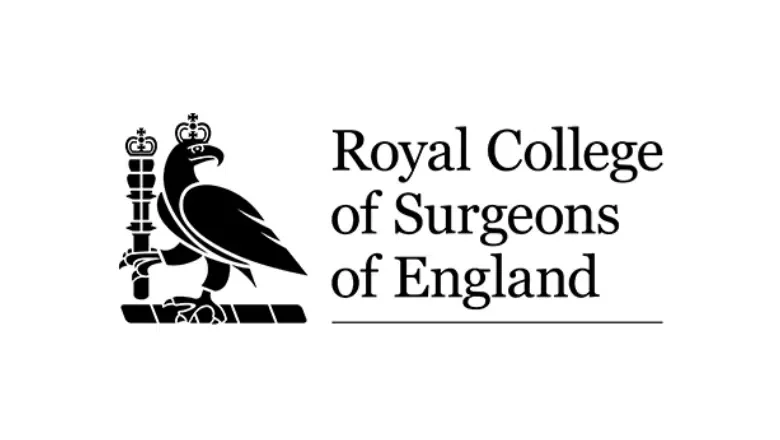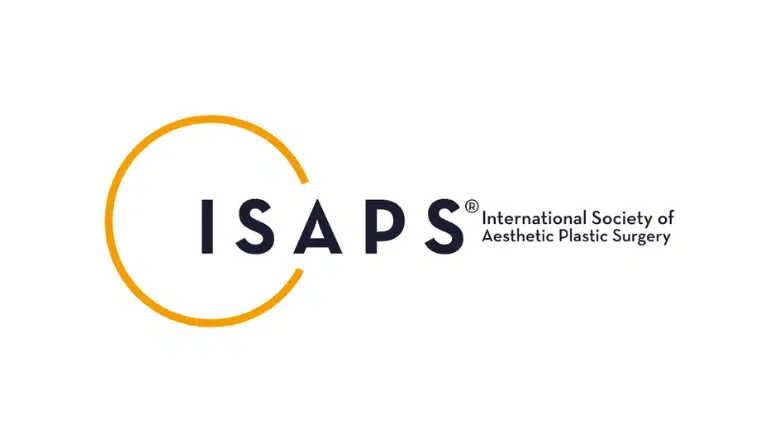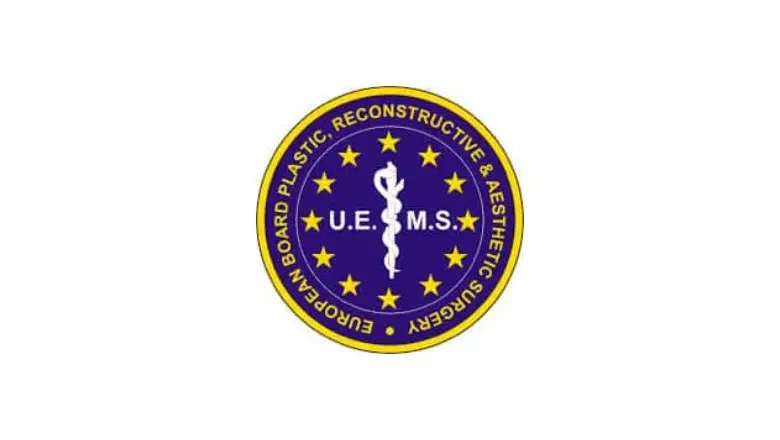Gynecomastia is a medical condition that results from an imbalance of hormones, specifically oestrogen and male androgens. It leads to the growth of glandular tissue in male breasts, creating a more feminine appearance. The condition can affect one or both breasts, sometimes unevenly. Factors such as ageing, certain medications (like anti-androgens, AIDS medications, anabolic steroids, and antidepressants), alcohol, and certain health conditions (like hypogonadism, kidney failure, or liver disease) can contribute to gynecomastia.
On the other hand, the presence of excess fat in the chest area of males is typically linked to overall body fat and is not exclusive to the chest area. This is often a result of weight gain, lack of exercise, or poor diet, and it doesn’t involve the actual enlargement of breast glands. Unlike gynecomastia, this condition, commonly referred to as pseudogynecomastia or lipomastia, can often be improved through a regimen of diet and exercise.
The distinction between gynecomastia and excess chest fat is crucial, as it determines the most effective treatment. While diet and exercise can reduce the appearance of excess chest fat, gynecomastia, depending on its severity, may require medical or surgical intervention. Medications are sometimes prescribed to adjust the hormone imbalance, or in more severe cases, surgical procedures such as gynecomastia surgery, also known as male breast reduction may be considered.
Therefore, if you’re experiencing enlargement of the chest area, it’s important to consult with a specialist plastic surgeon at Centre for Surgery to understand the nature of your condition and the most suitable treatment options for you.
RELATED: Gynecomastia Surgery FAQs – Q&As about Male Breast Reduction
Identifying the precise cause of gynecomastia is key to instituting the correct treatment to remove excessive breast tissue using male breast reduction surgery. Here, we discuss the key differences between gynecomastia and chest fat and outline the optimum treatments for both conditions.
What is Gyno?
Gynecomastia London is a condition in which excessive glandular tissue develops beneath the nipples. It can affect one or both sides and may appear symmetrical or asymmetrical between both sides. The reduction in circulating levels of androgens with an increase in oestrogen is thought to be the most common underlying cause of the condition. However, several other causes may be responsible.
The most common clinical features of gynaecomastia affecting men include:
- Excessive glandular tissue leading to a swollen chest
- Hard lumps felt beneath the skin
- A feeling of tenderness when the chest is touched
- Pain which may affect certain activities
- Increased body mass index (BMI)
What Causes Gyno?
Gynecomastia most commonly develops from an underlying imbalance in hormones or may be caused by recreational drug use or certain medicines. The most common causes of gynecomastia affecting men in the UK include:
Hormonal imbalance
An underlying hormonal imbalance is most commonly responsible for the development of gynecomastia. Abnormalities in the levels of certain hormones, including male hormones or oestrogen, can occur at any point in life.
Gynecomastia may first present itself when a baby boy is born, and this is most commonly due to excessive levels of circulating oestrogen which pass from the mother. This type of gynecomastia affecting babies often settles down by itself after three or four months after birth but may, on occasion, take longer to resolve.
Gynecomastia next affects boys in their teenage years, often just before undergoing puberty. Gynecomastia is very common during puberty, and this type of gynecomastia also settles down within six months to a year without any treatment.
Gynecomastia in adult men may still develop, and this is most often due to a hormonal imbalance. In rare cases, there may be a hormone-secreting tumour affecting the pituitary gland or the adrenal gland resulting in gynecomastia. Cancer of the liver or testes may also result in an overproduction of oestrogen, with a deficiency of oestrogen leading to gynecomastia.
Puberty
As young men approach puberty, excess breast tissue may begin to form under the effects of substantial hormonal changes. This is often the time when the body is undergoing rapid growth and development. Excess breast tissue caused by puberty is, in the vast majority of cases, entirely harmless and does not require surgical treatment.
Certain medications
Men may be taking several medications, which may result in gynecomastia. These medicines may increase oestrogen levels. There are also types of medications that may prevent the formation of male androgens. If a medicine is taken that blocks the formation of certain male androgens, then the effects of oestrogen will be more obvious, resulting in gynecomastia.
Examples of medicines that may result in gynecomastia:
- Epilepsy medications
- Antianxiety and antidepressant medications
- Drugs used for the treatment of cardiovascular disease
- Drugs used to treat peptic ulcers
- Certain types of chemotherapy drugs, including alkylating agents, work to prevent cancer cells from growing but may also disrupt cellular DNA.
Many men may also take over-the-counter substances, such as herbal preparations and essential oil products that may cause gynecomastia, including lavender oil.
Medical causes
Several medical conditions can result in gynecomastia, including cancer of the pituitary gland, adrenal glands or testis. Certain types of lung cancer, as well as hyperactive thyroid, are recognised causes.
Chronic medical conditions such as liver cirrhosis caused by excessive alcohol intake or cancer of the liver may also cause gynecomastia resulting in the development of excess breast tissue.
Recreational substance abuse
Many men may take anabolic steroids to promote muscle gain and augment the effects of weightlifting. Anabolic steroid use is strongly associated with the formation of ‘man boobs’. Excessive alcohol intake along with cannabis use are recognised causes of the condition.
How is Gynecomastia Different from Chest Fat?
Gynecomastia and chest fat, while they may appear similar, are distinct conditions with different origins and treatment pathways.
Gynecomastia stems from a hormonal imbalance leading to breast gland tissue growth. This condition may affect one or both breasts, sometimes unevenly, and can occur in males at any stage of life. It’s not typically linked to overall body weight, and physical exercises or weight loss regimens usually have little to no impact on reducing it. Treatment for gynecomastia often involves addressing the root cause, which could be hormonal or linked to certain medications or health conditions. In more severe cases, surgical intervention might be necessary to remove the excess glandular tissue.
Chest fat, on the other hand, is an accumulation of adipose tissue, or fat, in the chest area. This condition, sometimes referred to as pseudogynecomastia, is typically associated with being overweight or obese. Fat deposition isn’t limited to the chest area; it is part of overall body fat. Unlike gynecomastia, chest fat can be addressed effectively through diet and exercise. Adhering to a balanced, healthy diet and regular exercise routine can reduce fat stores in the chest area.
While gynecomastia and chest fat may present similarly, an accurate diagnosis is important to determine the most effective treatment plan. For this reason, individuals dealing with these conditions should seek professional medical advice at the Centre for Surgery. Our surgeons can thoroughly examine and guide you towards the best course of action based on your unique circumstances.
How do you tell if you have gyno or chest fat?
Gynecomastia is characterised by the enlargement of glandular breast tissue in males, resulting in a more feminine appearance. Hormonal imbalances, certain medications, or underlying health conditions can cause it. Gynecomastia often feels firm or rubbery, may be tender or painful, and can have a distinct shape resembling a woman’s breasts.
Chest fat, on the other hand, refers to excess adipose tissue or fat in the chest area. It is commonly associated with overall weight gain and can result in the appearance of enlarged breasts. Chest fat typically feels soft to the touch, similar to fat in other parts of the body, and may not have a well-defined shape.
If you are concerned about the appearance of your chest, it is recommended to consult with a healthcare professional or a plastic surgeon. They will evaluate your specific condition and provide an accurate diagnosis, allowing for an appropriate treatment plan tailored to your needs.
Chest Fat vs Gynecomastia
Assessing symptoms is crucial in distinguishing between gynecomastia and chest fat. While the two conditions may appear similar, there are distinct differences to look out for:
Gynecomastia:
- Typically, gynecomastia could cause discomfort ranging from mild to significant, manifesting as pain or tenderness in the chest area.
- The texture of the chest in cases of gynecomastia tends to be firm, perhaps feeling rubbery or hard beneath the skin. A discernible lump might also be present.
- The shape of the chest in gynecomastia is often rounded and proportionate, somewhat resembling female breasts. In instances with smaller tissue amounts, the nipple-areolar complex might project more prominently than the rest of the chest.
- Weight loss might not result in a notable reduction in the size of the chest, even after shedding a considerable amount of weight. In some instances, weight loss might make the glandular tissue more apparent as surrounding fat diminishes.
Chest Fat:
- Chest fat, on the other hand, is far less likely to induce pain or tenderness.
- The texture of the chest in the case of chest fat is soft to the touch, similar to fat in other parts of the body.
- Unlike gynecomastia, chest fat may not have a distinct shape, often appearing saggy or droopy.
- Weight loss should lead to at least some reduction in the size of the pectoral region if chest fat is present. As part of overall body fat, chest fat responds to diet and exercise in the same way as fat elsewhere in the body.
How To Get Rid of Gyno?
Addressing gynecomastia can sometimes be as simple as making lifestyle changes or waiting for the condition to resolve itself naturally. However, male chest reduction is typically required in most cases. Depending on the patient’s individual needs, this surgery can be performed under either intravenous sedation or general anaesthesia. Two common procedures employed for this purpose include breast liposuction and excision surgery.
Liposuction
Chest liposuction is aimed at removing stubborn fat tissue that doesn’t respond to diet and exercise. A surgeon will use a hollow stainless steel tube, known as a cannula, to carry out this process. The cannula is inserted through minor incisions in the skin, and the excess fat is suctioned out. This method proves particularly effective in treating gynecomastia by eliminating the accumulation of unwanted breast tissue in men.
Gland Excision Surgery
In cases where excess glandular tissue or skin is causing an unwanted feminine breast-like appearance, a specialist surgeon may propose an excision surgery. This procedure involves removing superfluous glandular tissues and skin around the breast through a peri-areolar incision, i.e., an incision made around the nipple-areola complex. After gland removal, the nipple-areola complex may be repositioned, giving the chest a more masculine and well-defined look. Excision surgery offers the advantage of removing additional glandular tissues and skin that wouldn’t typically respond sufficiently to liposuction alone.
RELATED: Recovery after Gynecomastia Surgery – Top Tips & Timeline
Remember, the treatment for gynecomastia is highly personalised. Each individual is different, and the surgeon would choose the best surgical approach after careful evaluation of your condition, aesthetic goals and overall health.
Gyno Surgery Before & After Photos
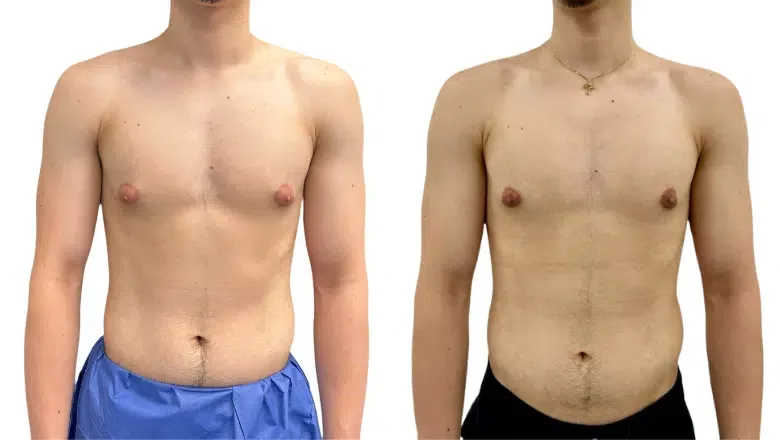
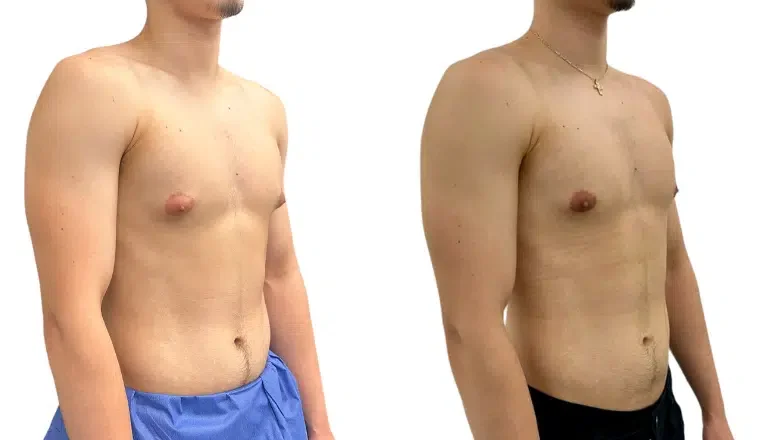
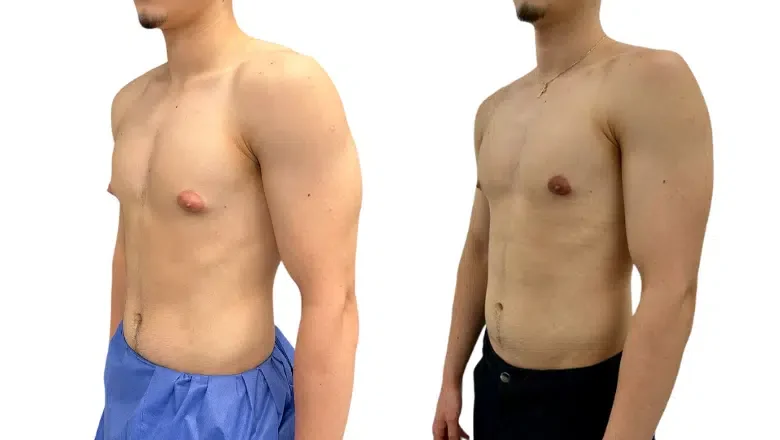

What Are the Benefits of Gyno Removal Surgery?
Gynecomastia surgery, or gyno surgery, is not just a medical procedure; it’s a transformative journey that offers a multitude of benefits for individuals grappling with excess chest tissue. This surgery not only enhances one’s physical appearance but also promotes psychological well-being and daily comfort. Let’s delve deeper into the multifaceted advantages of this life-changing procedure.
RELATED: The Transformative Effects of Gynecomastia Surgery
Achieving a Masculine Chest Contour
At the heart of gynecomastia surgery is its ability to remove excess glandular and fatty tissues, resulting in a chest that is flatter and more aligned with traditional masculine aesthetics. This alteration can significantly boost an individual’s body image and self-confidence, offering them a fresh start.
Restoring Symmetry for Aesthetic Balance
Beyond the reduction of excess tissue, the procedure meticulously ensures the chest’s symmetry, fostering an overall appearance that is not only more masculine but also harmonious and balanced. This attention to detail contributes to the profound satisfaction reported by many patients post-surgery.
Reclaiming Self-Esteem and Confidence
The ripple effects of gynecomastia surgery extend deeply into the psychological and emotional domains. The correction of what many perceive as a flaw diminishes feelings of embarrassment and social stigma associated with gynecomastia. Patients often experience a significant uplift in self-esteem and confidence, which can revolutionise their social interactions and personal outlook on life.
Enhancing Quality of Life
The alleviation of the mental burden gynecomastia carries can lead to a remarkable improvement in overall quality of life. Freed from the chains of self-consciousness, individuals are more likely to engage in activities they once avoided, such as swimming or public changing scenarios, thus embracing a more active and fulfilling lifestyle.
Eliminating Discomfort During Physical Activities
One of the tangible benefits of gynecomastia surgery is the removal of physical discomfort during exercise and other activities. The reduction of excess breast tissue not only enhances the chest’s appearance but also removes the physical limitations and discomfort previously experienced, making physical activities more enjoyable and less of a chore.
Alleviating Skin Irritation and Health Concerns
For some, the excess tissue under the breast can cause ongoing skin irritation and other health concerns due to friction. Gynecomastia surgery addresses these issues head-on by removing the root cause, leading to a significant improvement in daily comfort and reducing the risk of skin conditions associated with prolonged irritation.
How Much Does a Gyno Removal Surgery Cost?
Gynaecomastia surgery, commonly referred to as male breast reduction, represents a significant step towards achieving a more contoured and masculine chest. At Centre for Surgery in London, The cost of gyno surgery UK begins at a starting price of £5000. This figure is not just a number but an inclusive package covering the essentials required for a seamless surgical experience. Included in this cost are the professional fees for the surgeon, the anaesthetic costs, charges associated with the use of our state-of-the-art facilities, and the comprehensive post-operative care designed to ensure your recovery is smooth and complication-free.
The nature of surgical procedures is such that they are tailored to the individual needs of each patient. As a result, the costs can fluctuate based on the complexity of the case or the necessity for additional interventions, such as liposuction, to achieve optimal outcomes. It’s also prudent to consider that the surgical journey doesn’t end with the procedure itself. Follow-up appointments are a critical component of the aftercare process, providing an opportunity to monitor recovery and address any concerns promptly. While we strive to ensure a smooth and straightforward recovery, it’s important to acknowledge the possibility of unforeseen complications, which may lead to additional treatments and associated costs.
We at Centre for Surgery understand the importance of transparency and informed decision-making. We encourage a consultation with our seasoned surgeons, who can offer a detailed breakdown of costs and a personalised course of action. This approach not only ensures clarity but also aligns expectations with the achievable outcomes, paving the way for satisfaction and confidence in the decision to undergo gynecomastia surgery.
How to Lose Chest Fat Naturally
Losing chest fat, often referred to as ‘man boobs‘, primarily requires a holistic approach focusing on overall weight reduction, as spot reduction (losing fat from one specific area) is not possible. This involves adopting a healthier lifestyle, a balanced diet and regular exercise.
While gyno surgery is a definitive solution, tweaking your lifestyle, especially your diet and exercise routine, can play a supportive role in managing the condition. Here’s how you can adjust your eating habits and workout regime to potentially ease the symptoms of gynecomastia.
Nutritional Adjustments for Hormonal Balance
The foods you consume can have a significant impact on your body’s hormonal balance, which in turn affects the development of fatty tissue in the chest. To promote hormonal health and possibly reduce the impact of gynecomastia, consider incorporating the following into your daily meals:
- Omega-3 Fatty Acids: Found abundantly in cold-water fish such as tuna and salmon, omega-3s can help balance hormone levels.
- Zinc: This mineral is crucial for hormone production and can be found in meats, shellfish, legumes, and nuts.
- Vitamin E and Vitamin D: To support overall hormonal health, boost your intake with sunflower seeds, bell peppers, and mushrooms.
- Milk Thistle Seeds: Known for their liver-supporting properties, these can indirectly help with hormonal balance.
- Anti-inflammatory Foods: Incorporating leafy greens, olive oil, and almonds can reduce inflammation and support hormone regulation.
On the flip side, it’s wise to reduce the consumption of certain foods that might exacerbate hormonal imbalances or increase fatty tissue:
- Soy Products: These contain phytoestrogens, which can mimic oestrogen in the body.
- Processed and Fried Foods: Such items can lead to weight gain and increased chest fat.
- Beetroot: While healthy, it has been suggested to increase oestrogen levels.
- Frozen Foods: Often high in preservatives, these can contribute to hormonal imbalance.
Exercise for Chest Enhancement
Although exercise isn’t a cure-all for gynecomastia, it can significantly improve the appearance of the chest area and boost your mood through the release of endorphins. Here are some exercises to incorporate into your routine:
- Cardio Workouts: Activities like walking or running can help burn overall body fat, potentially reducing chest fat.
- Full-Body Workouts with an Upper Body Focus: Swimming and rowing are excellent for engaging the entire body while also targeting the upper body.
- Chest-Specific Exercises: To build up the pectoral muscles, include exercises like bench presses and push-ups in your workout plan.
RELATED: Can You Get Rid of Gynecomastia with Exercise?
Adopting a healthier lifestyle may not directly cure gynecomastia, but it plays a crucial role in tackling factors that contribute to its appearance. By focusing on a balanced diet rich in hormone-supporting nutrients and maintaining an active lifestyle, you can work towards a physique that feels more comfortable and confident.
FAQs – Gyno Surgery vs Chest Fat
How Can You Distinguish Between Gynaecomastia and Chest Fat?
Differentiating between gynaecomastia (often abbreviated as ‘gyno’) and chest fat revolves around understanding the distinct characteristics of each condition. Gynaecomastia is identified by the presence of firm, glandular tissue located beneath the nipple area. This tissue can sometimes be tender to the touch and may present itself in either one or both breasts, leading to potential asymmetry in appearance. The hallmark of gyno is this glandular tissue development, which differs significantly from mere chest fat.
On the other hand, chest fat, a more common occurrence among individuals with higher body fat percentages, exhibits a softer, more diffuse quality. Unlike gyno, chest fat is typically distributed more evenly across the chest area, lacking the firm, localised presence characteristic of glandular tissue. This distinction is crucial for accurately identifying the nature of the issue and thereby determining the most appropriate approach to treatment or management.
Does Gynecomastia Necessarily Affect Both Breasts?
Gynecomastia does not invariably impact both breasts. The condition can manifest as either unilateral (affecting one breast) or bilateral (affecting both breasts), with the degree of enlargement potentially differing between the two. Unilateral gynecomastia, though less common than its bilateral counterpart, does occur and is characterised by the development of glandular tissue in just one breast. This can lead to an asymmetrical appearance, where one side of the chest may appear more enlarged or contoured than the other.
The variability in how gynecomastia presents itself underscores the importance of a tailored assessment and approach to treatment. Understanding whether the condition is unilateral or bilateral, along with the extent of tissue development, is crucial for devising the most effective management strategy, whether it be observation, medical intervention, or surgical removal of the glandular tissue.
Does gyno go away naturally?
The phenomenon of gynecomastia, often known as ‘gyno’, presents a unique set of circumstances based on its timing and cause. When gyno emerges during puberty, it’s not uncommon for it to dissipate naturally over time. This is largely due to the body’s hormonal levels finding their equilibrium as one progresses through adolescence. The symptoms of gyno, which include swollen breast tissue and sometimes discomfort, often subside without the need for intervention.
However, the scenario shifts when we consider persistent gyno that either remains from adolescence into adulthood or develops anew in adult life. This form of gyno is less likely to retreat on its own and may indeed necessitate medical or surgical measures to be effectively addressed. The underlying reasons for adult-onset gyno, such as hormonal imbalances, the influence of certain medications, or other health conditions, often require targeted intervention to achieve resolution.
RELATED: Does Gynecomastia Go Away?
Can I get rid of gynecomastia by losing weight?
In men with true gynecomastia or glandular enlargement due to an underlying hormonal imbalance or recreational substance use, fat reduction with diet and exercise will not treat the problem effectively. True gynecomastia with excess glandular tissue can only be improved using a surgical excision technique with male breast reduction surgery.
RELATED: How can you get rid of gynecomastia without surgery?
Does gynecomastia always affect both breasts?
Gynaecomastia can also affect only one side, although most men commonly develop the condition in both breasts.
How common is gyno?
Gynecomastia is not an uncommon condition among males and spans across all ages with varying degrees of prevalence. During puberty, it’s remarkably widespread, with estimates suggesting that up to 70% of adolescent boys experience some form of gyno as they navigate the hormonal rollercoaster of their teenage years. This high prevalence underscores the condition’s link to natural hormonal fluctuations during growth.
The incidence of gyno continues to be significant in adulthood, though the specific prevalence can vary. The commonality of adult gyno is often attributed to a myriad of factors, including, but not limited to, hormonal imbalances, the side effects of certain medications, and underlying health issues that may disrupt the body’s hormonal harmony.
RELATED: How common is gynecomastia?
Are Male Breast Reduction Results Permanent?
Male breast reduction results are typically long-lasting for the majority of patients, but there are circumstances where a second surgery might be needed to address complications or to fine-tune results. Adherence to a healthy lifestyle is crucial after the procedure. Factors such as considerable weight gain, steroid use, or certain medical conditions can potentially lead to a resurgence of gynecomastia. Moreover, substances that interfere with androgen levels could also impact the outcomes.
RELATED: Is Gynecomastia Surgery Worth It?
Can I get rid of gyno by losing weight?
Addressing gynecomastia through weight loss is a nuanced topic. For individuals whose gyno is predominantly linked to excess fatty tissue, embarking on a weight loss journey may indeed yield noticeable improvements in the appearance of gyno. This approach targets the reduction of fat around the chest area, potentially diminishing the prominence of gyno.
However, it’s crucial to understand that gyno, which stems from the development of glandular breast tissue, presents a different challenge. In such instances, weight loss alone may not suffice to fully resolve the condition. The glandular component of gyno, being distinct from fatty tissue, requires more direct interventions for removal. Surgical options, specifically designed to address glandular gyno, often become a necessary consideration for those seeking a definitive solution.
What Strategies Can Help Reduce Chest Fat in 10 Days for Males?
While significantly reducing chest fat within a 10-day timeframe presents a considerable challenge, certain strategies can be employed to kickstart the process. Initiating a calorie-restricted diet is a foundational step; by consuming fewer calories than your body burns, you can begin to tap into fat reserves for energy, which may include chest fat. Complementing dietary changes with specific exercise regimens, particularly high-intensity interval training (HIIT) and targeted strength training exercises focusing on the upper body, can amplify fat loss and muscle toning in the chest area.
Moreover, maintaining adequate hydration is essential for optimising metabolism and facilitating the fat-burning process. Similarly, ensuring sufficient rest and quality sleep is critically important, as it supports recovery and hormonal balance, both of which are integral to achieving fast and effective fat reduction.
Gyno Removal Surgery in London: Discover Excellence at Centre for Surgery
Choosing the right clinic for gynecomastia surgery, commonly referred to as gyno removal surgery, is a crucial step towards achieving your desired outcome. At Centre for Surgery in London, we stand at the forefront of providing specialised, patient-centred care for men looking to enhance their physical appearance and boost their confidence. Our state-of-the-art facilities, coupled with our team of experienced surgeons, ensure that each patient receives the highest standard of care from consultation through to recovery.
Why Choose Centre for Surgery?
At Centre for Surgery, we pride ourselves on our commitment to excellence in all aspects of patient care. Our clinic is renowned for its:
- Expert Team: Our surgeons are specialists in gynecomastia surgery, boasting years of experience and a dedication to achieving the best possible outcomes.
- Advanced Techniques: Utilising the latest surgical techniques and technologies, we ensure minimally invasive procedures, reduced recovery times, and optimal aesthetic results.
- Personalised Care: Understanding that each patient’s needs are unique, we offer bespoke treatment plans tailored to your specific goals and concerns.
Hear from Our Patients
Testimonial 1: “After years of feeling self-conscious, I finally decided to undergo gyno removal surgery at Centre for Surgery. From my first consultation, I knew I was in good hands. The results have exceeded my expectations, and I’ve never felt more confident.” – James D.
Testimonial 2: “The team at Centre for Surgery was incredibly supportive throughout the entire process. They answered all my questions and made sure I felt comfortable every step of the way. The difference in my appearance is remarkable, and I’m extremely grateful.” – Michael T.
Testimonial 3: “Choosing Centre for Surgery for my gynecomastia treatment was the best decision I’ve made. The care I received was exceptional, and the outcome has truly transformed my life. I highly recommend their services to anyone considering this surgery.” – Alex W.
Booking Your Consultation
Embarking on your journey towards a more confident self starts with a consultation at our clinic. Our friendly team is ready to guide you through the process, answer your queries, and help you understand the best course of action for your needs.
📞 Phone: 0207 993 4849
📧 Email: contact@centreforsurgery.com
📍 Address: 95-97 Baker Street, London W1U 6RN
For more detailed information about our approach and what makes us the premier choice for gyno removal surgery in London, please visit our About Us page.
Exploring Financing Options and Resources
We believe that financial considerations should not be a barrier to achieving your desired appearance. That’s why we offer a range of finance options, including 0% APR with Chrysalis Finance, to make your procedure more affordable. Learn more about our financing options here.
Additional Resources
For those looking to deepen their understanding of gyno removal surgery and explore other plastic surgery options, our comprehensive Plastic Surgery Blog is an invaluable resource. Additionally, you can find answers to commonly asked questions and gain further insights into our practice by visiting our Clinic FAQs and exploring our Baker Street Clinic page.
At Centre for Surgery, we’re dedicated to not just meeting but exceeding your expectations. Contact us today to begin your transformation journey with a team that truly cares about your results and well-being.
